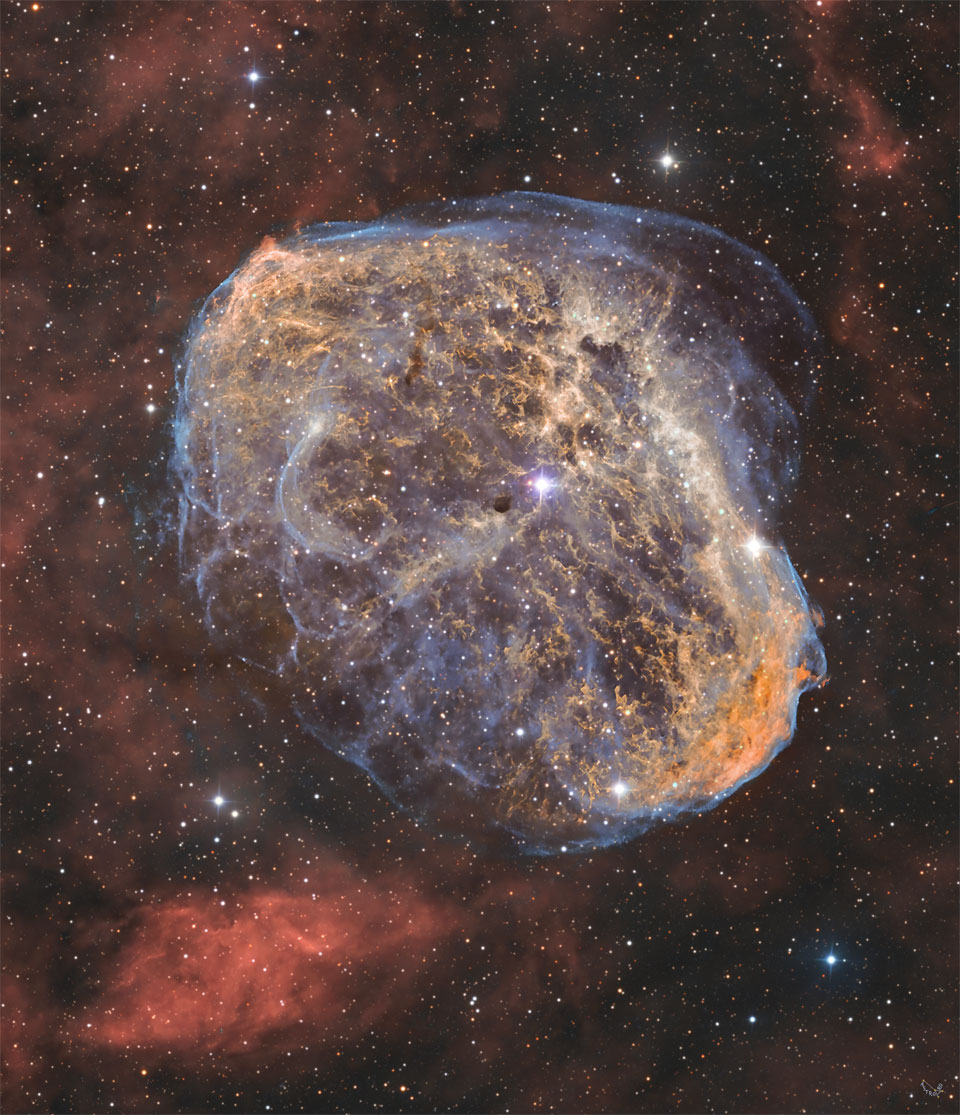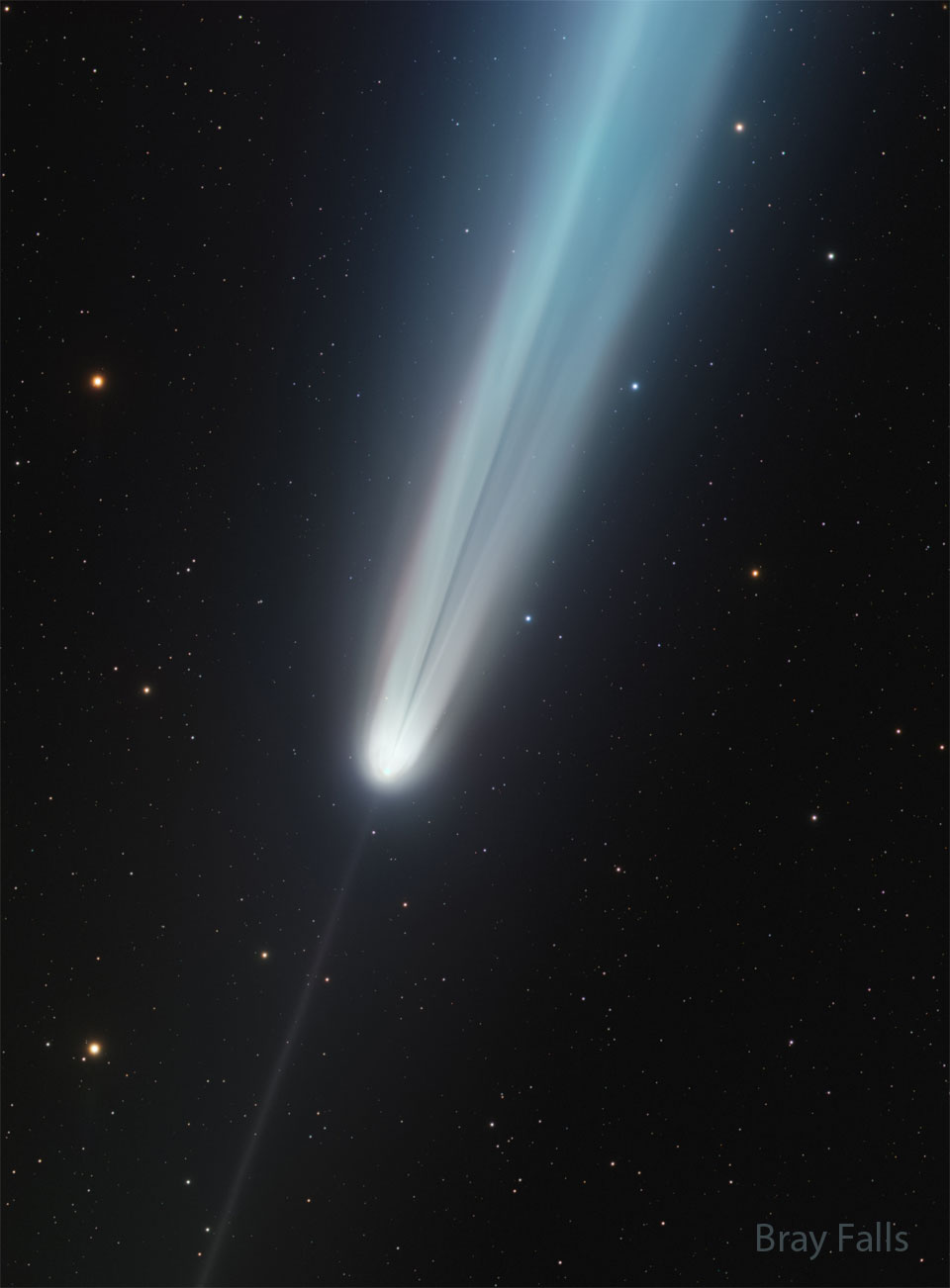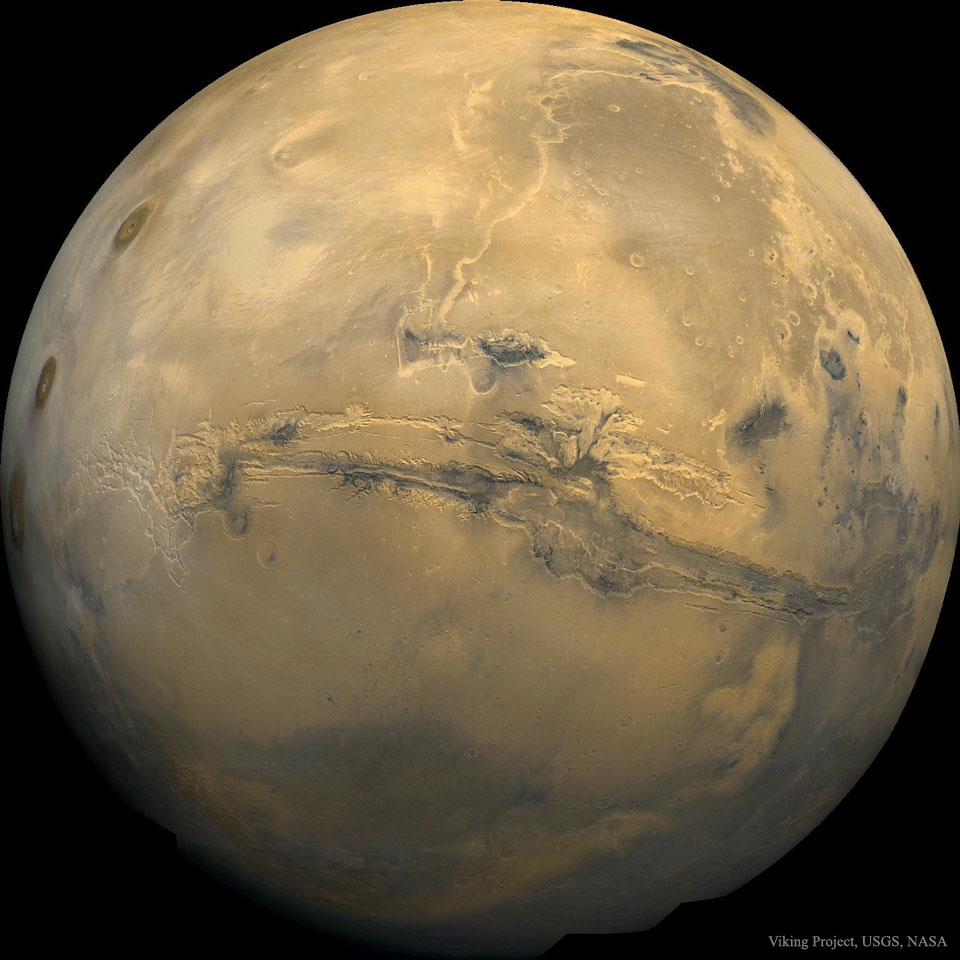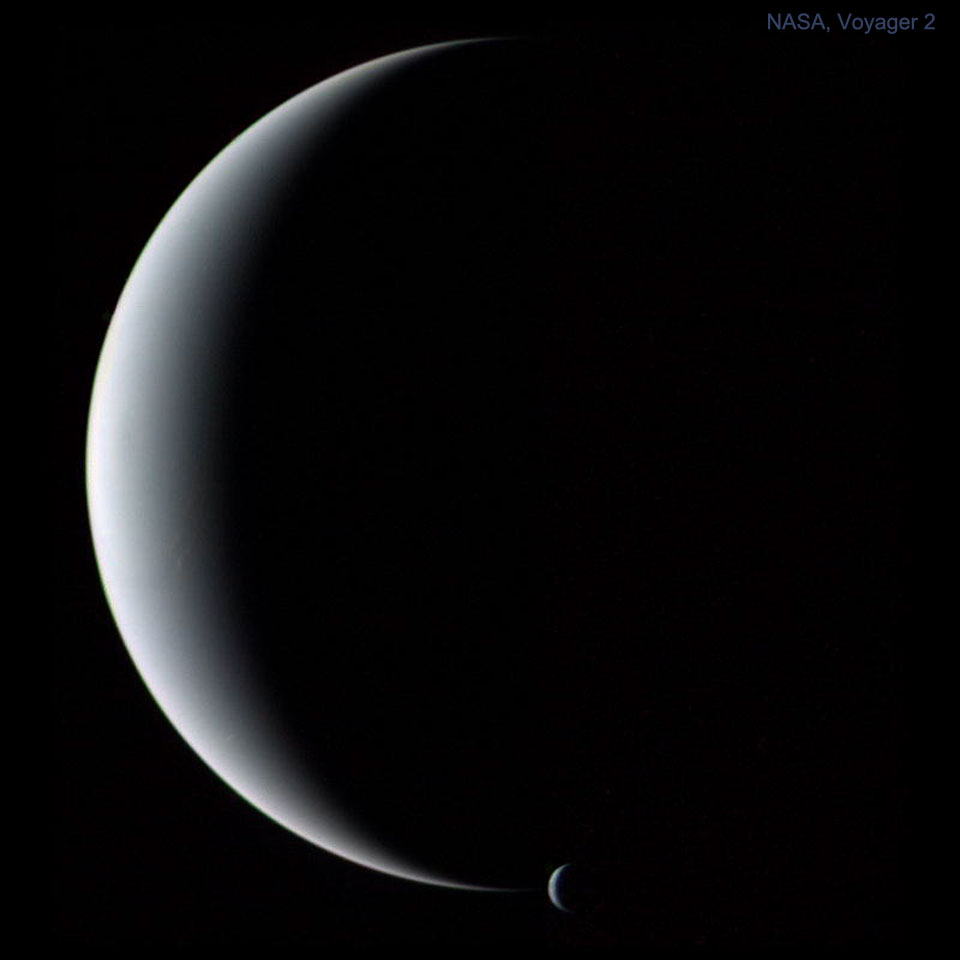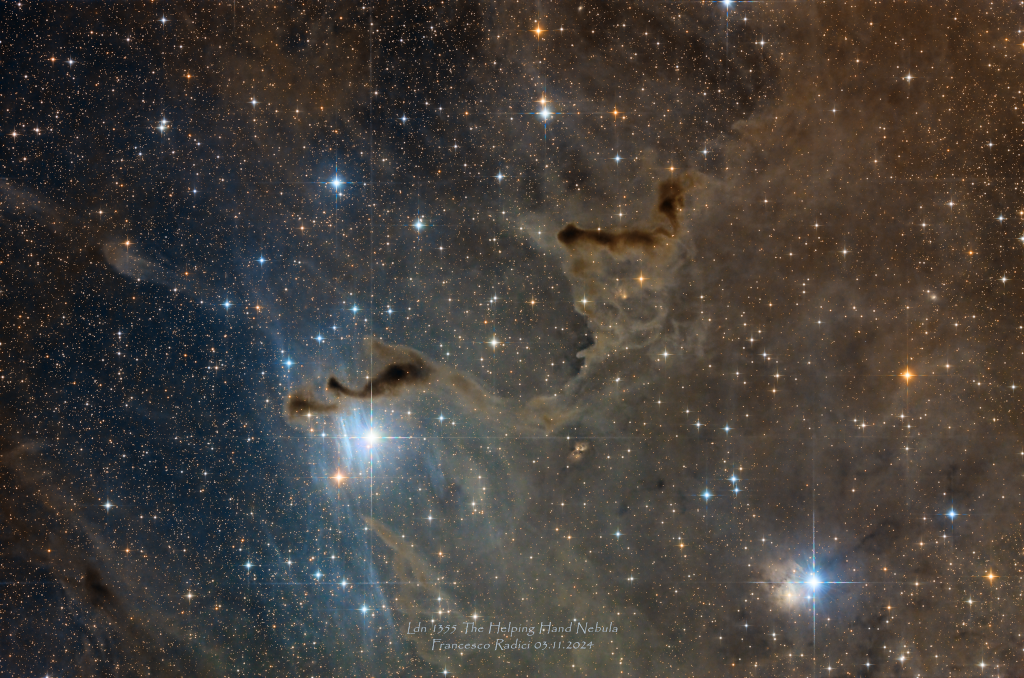Nombre total de pages vues
12/11/2024
ASTRONOMY - NGC 6888: The Crescent Nebula
2024 November 12
Image Credit & Copyright: Team ARO
Explanation: How was the Crescent Nebula created? Looking like an emerging space cocoon, the Crescent Nebula, visible in the center of the featured image, was created by the brightest star in its center. A leading progenitor hypothesis has the Crescent Nebula beginning to form about 250,000 years ago. At that time, the massive central star had evolved to become a Wolf-Rayet star (WR 136), shedding its outer envelope in a strong stellar wind, ejecting the equivalent of our Sun's mass every 10,000 years. This wind impacted surrounding gas left over from a previous phase, compacting it into a series of complex shells, and lighting it up. The Crescent Nebula, also known as NGC 6888, lies about 4,700 light-years away in the constellation of Cygnus. Star WR 136 will probably undergo a supernova explosion sometime in the next million years.
11/11/2024
ASTRONOMY - The Unusual Tails of Comet Tsuchinshan-Atlas
2024 November 11
Image Credit & Copyright: Bray Falls
Explanation: What created an unusual dark streak in Comet Tsuchinshan-Atlas's tail? Some images of the bright comet during mid-October not only caught its impressively long tail and its thin anti-tail, but a rather unexpected feature: a dark streak in the long tail. The reason for the dark streak is currently unclear and a topic of some debate. Possible reasons include a plume of dark dust, different parts of the bright tail being unusually superposed, and a shadow of a dense part of the coma on smaller dust particles. The streak is visible in the featured image taken on October 14 from Texas, USA. To help future analyses, if you have taken a good image of the comet that clearly shows this dark streak, please send it in to APOD. Comet Tsuchinshan–ATLAS has now faded considerably and is returning to the outer Solar System.
10/11/2024
ASTRONOMY - Valles Marineris: The Grand Canyon of Mars
Image Credit: NASA, USGS, Viking Project
Explanation: The largest canyon in the Solar System cuts a wide swath across the face of Mars. Named Valles Marineris, the grand valley extends over 3,000 kilometers long, spans as much as 600 kilometers across, and delves as much as 8 kilometers deep. By comparison, the Earth's Grand Canyon in Arizona, USA is 800 kilometers long, 30 kilometers across, and 1.8 kilometers deep. The origin of the Valles Marineris remains unknown, although a leading hypothesis holds that it started as a crack billions of years ago as the planet cooled. Several geologic processes have been identified in the canyon. The featured mosaic was created from over 100 images of Mars taken by Viking Orbiters in the 1970s.
09/11/2024
BIOMES - La mangrove
ASTRONOMY - Neptune at Night
2024 November 9
Image Credit & Copyright: Voyager 2, NASA
Explanation: Ice giant Neptune is faint in Earth's night sky. Some 30 times farther from the Sun than our fair planet, telescopes are needed to catch a glimpse of the dim and distant world. This dramatic view of Neptune's night just isn't possible for telescopes in the vicinity of planet Earth though. Peering out from the inner Solar System they can only bring Neptune's day side into view. In fact this night side image with Neptune's slender crescent next to the crescent of its large moon Triton was captured by Voyager 2. Launched from planet Earth in 1977 the Voyager 2 spacecraft made a close fly by of the Solar System's outermost planet in 1989, looking back on Neptune as the robotic spacecraft continued its voyage to interstellar space.
08/11/2024
BIOMES - La toundra sous la menace du réchauffement climatique
ASTRONOMY - Helping Hand in Cassiopeia
2024 November 8
Image Credit & Copyright: Francesco Radici
Explanation: Drifting near the plane of our Milky Way galaxy these dusty molecular clouds seem to extend a helping hand on a cosmic scale. Part of a local complex of star-forming interstellar clouds they include LDN 1358, 1357, and 1355 from American astronomer Beverly Lynds' 1962 Catalog of Dark Nebulae. Presenting a challenging target for astro-imagers, the obscuring dark nebulae are nearly 3,000 light-years away, toward rich starfields in the northern constellation Cassiopeia. At that distance, this deep, telescopic field of view would span about 80 light-years.
ASTRONOMY - M16: Pillars of Star Creation
2024 October 22 M16: Pillars of Star Creation Image Credit: NASA , ESA , CSA , STScI ; Processing: Diego Pisano Explanation: These da...

-
2022 September 26 All the Water on Planet Earth Illustration Credit: Jack Cook, Adam Nieman, Woods Hole Oceanographic Institution ; Data ...
-
2021 August 11 Mammatus Clouds over Saskatchewan Image Credit & Copyright: Michael F Johnston Explanation: When do cloud bottoms appe...

